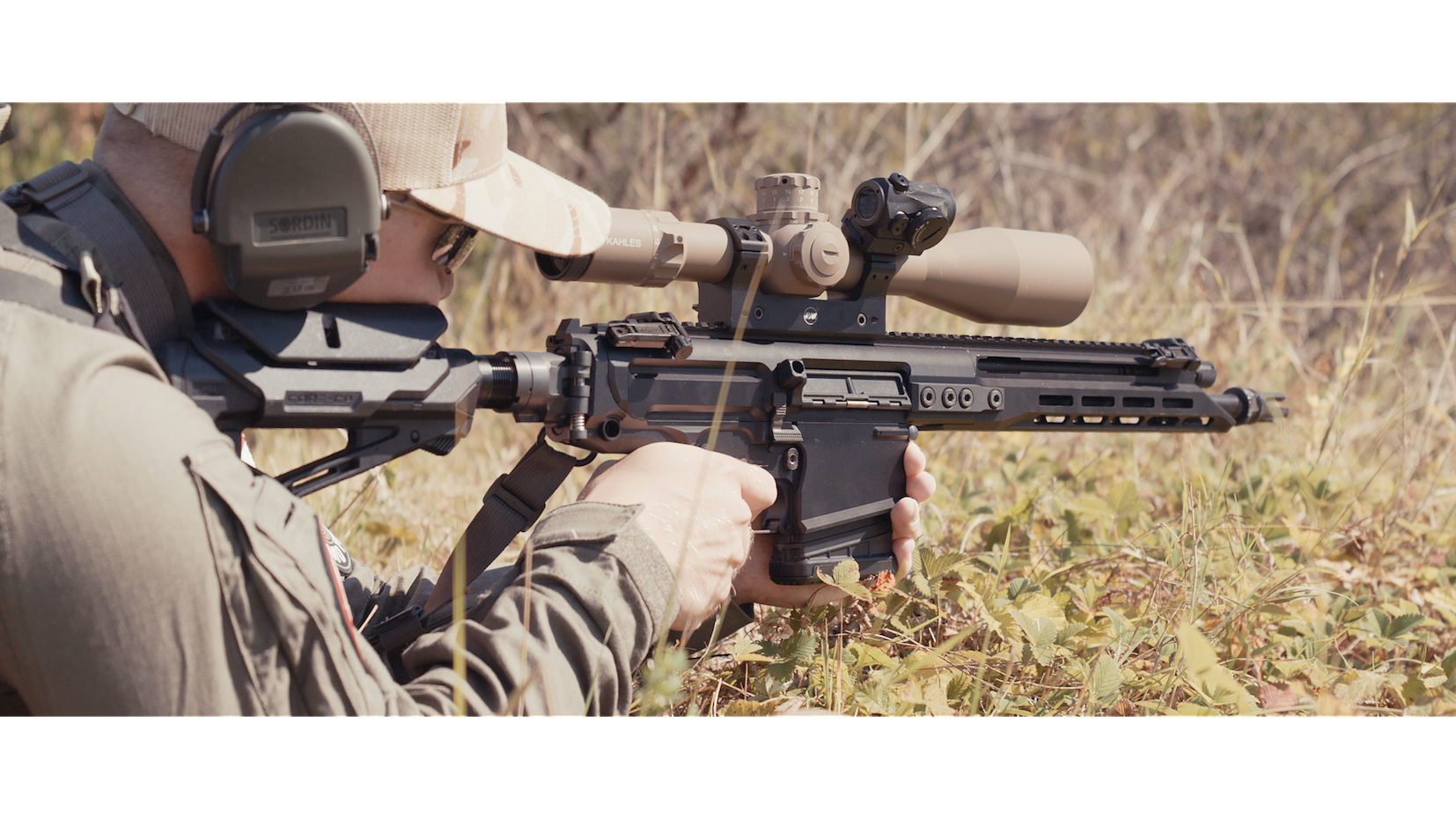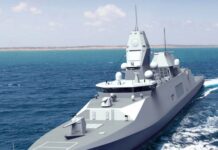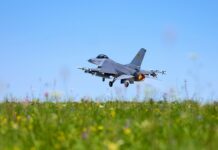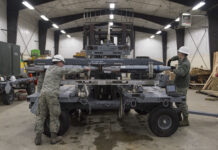
Designated marksman rifle – closing the range gap
David Saw
The modern designated marksman rifle (DMR) came about in response to conditions encountered in the post-2000 asymmetric conflicts, in particular in Afghanistan. Put simply, the requirement arose to complement the existing inventory of infantry weapons, specifically for a weapon that could offer increased range and significantly increased stopping power. Along with increasing adoption, new DMR designs are emerging to meet these requirements.
The DMR concept traces its origins to the early 1960s following the US military’s adoption of the M16 rifle in the 5.56 × 45 mm M193 cartridge. The US had previously influenced the selection of the 7.62 × 51 mm as the standard NATO rifle round in the early 1950s and by the early 1960s, most NATO nations were using rifles in 7.62 ×51 mm cartridge. At that point, it became clear that the US was opting for an intermediate 5.56 × 45 mm round for an assault rifle. By the end of the 1960s, the conventional wisdom had changed, and the aim was to develop a standard intermediate round for NATO small arms that would replace or supplement existing 7.62 × 51 mm calibre systems.
Eventually a new round, the SS109 in 5.56 × 45 mm, developed by FN Herstal in Belgium, was selected as the NATO standard round in October 1980 and remains so to this day. Performance of the standard round has improved over the years, with impressive results. However, there is only so much that you can achieve with a round of this calibre. Evolutionary developments in assault rifle designs undoubtedly help, as does the installation of an optic. However, the 5.56 × 45 mm round was generally seen as adequate operationally until conditions in Afghanistan revealed the need for a new weapon.
Others had already come to the conclusion that while an assault rifle was exactly what the infantry needed in terms of firepower, the loss of range compared to the round used by an old-fashioned battle rifle was a concern. This was an issue that the former Soviet Army chose to confront in the late 1950s and they eventually opted for a solution that could be classified as a DMR.
The Soviet Army inherited the 7.62 × 54R mm round as its standard battle rifle round from the Imperial Russian Army that had first entered service in 1891 for the Mosin-Nagant rifle. After years of searching for a replacement round, they concluded that the 7.62 × 39 mm intermediate round was the best solution for future small arms use and this was the type classified in 1943. Its first use was with the SKS rifle, but it really came to prominence with the AK-47 assault rifle and its many variants. The AK provided the firepower required, but the concern was a reduction in range. This led to a decision in the 1950s to develop what we would now call a DMR and this weapon would use the old 7.62 × 54R mm round which was also due to remain in service as a machine gun round.

Credit: US DoD
The SVD rifle was subsequently developed by Dragunov, with a 10-round magazine and equipped with a 4× PSO-1 optic and backup iron sights. Standard 7.62 × 54R mm rounds can be used, but special ‘match grade’ ammunition is available, offering increased performance. Over the years, multiple variants of the weapon were developed with unlicenced versions built in China, Iran, Iraq and elsewhere. The weapon can also be equipped with 1PN51 or 1PN58 night sights, if the appropriate rail is fitted. The SVD was widely deployed in the Soviet Army as it increased infantry range coverage out to between 600 m and 800 m. The SVD was produced in massive numbers from the early 1960s onwards and has proliferated all over the world.
It is important to emphasise the significant performance of the SVD when it entered service. Up until the end of the 1980s, the standard British Army sniper rifle was the L42A1, a 7.62 × 51 mm calibre weapon based on the old Lee Enfield bolt action rifle. Official performance capabilities of the L42A1 were an effective range of 600 m and harassing fire out to 800 m. The British Army would subsequently recognise the importance of sniping and substantially improve their capabilities in that area. Yet they, like many other NATO armies, perhaps failed to appreciate the problems that the SVD and similar weapons would cause in the future.
Russia intends to eventually replace the SVD with the Chukavin SVCh from the Kalashnikov Group. This semi-automatic weapon will be available in multiple calibres for DMR applications and in a dedicated sniper configuration in .338 Lapua Magnum (8.6 × 70 mm) with a 10-round box magazine. The weapon is fitted with a MIL-STD-1913 Picatinny rail for sight and accessory integration. The DMR variants are available in 7.62 × 51 mm, with a 10 or 20-round box magazine, or 7.62 × 54R mm where they can use the standard SVD 10-round magazine.
The need arises
As operations in Afghanistan evolved, the British Army found itself having to deal with situations that exposed the limitations of its standard 5.56 × 45 mm squad weapons. Firstly, they were out-ranged by SVD-type weapons, and secondly, standard 5.56 × 45 mm rounds lacked ‘stopping power’ at extended ranges. Increasingly, the Taliban were also gaining access to body armour, making targets harder to neutralise. This opened the way to an urgent operational requirement (UOR) for an infantry weapon that could successfully engage and neutralise targets at extended ranges.
The objective was to have a highly accurate semi-automatic 7.62 × 51 mm calibre weapon that would be particularly effective in the 600–800 m range zone. A number of different weapons were evaluated including the FN Herstal SCAR-H, the Heckler & Koch (H&K) HK417, an AR-10 derivative from Sabre and the LMT Defense LW308 Modular Weapon System (MWS). The latter weapon was selected for the UOR in 2009 and features a 406 mm (16 in) barrel and a 20-round detachable box magazine. It is fitted with a 6×48 Trijicon ACOG TA648 optic and a Trijicon Rugged Miniature Reflex (RMR) red dot sight. Also available is the MilSight S135 MUNS (Magnum Universal Night Sight). The weapon was type classified as the L129A1 Sharpshooter by the British Army and an initial batch of 440 weapons was ordered.

Credit: Crown Copyright 2023
The L129A1 entered service in Afghanistan in 2010 and was so successful that a total of 3,000 weapons had been acquired by 2014. Perhaps the best endorsement of the L129A1 is that, unlike other infantry weapons acquired under UOR terms by the British Army, for example the L110 5.56 × 45 mm machine gun and the 60 mm mortar, it was not withdrawn from service after the end of operations in Afghanistan. Indeed, it was to find an additional role as it was selected to meet the Sniper Support Weapon (SSW) requirement. In the British Army, snipers operate as a two-person team – the sniper with the L115A3 sniper rifle in .338 Lapua Magnum (8.6 × 70 mm) with a Schmidt & Bender 5-25×56 scope and the spotter equipped with the SSW. The L129A1 was selected to meet the SSW requirement and in this form it would be equipped with a Surefire suppressor and a Schmidt & Bender L17A2 3-12×50 scope. If there was a problem with the scope on the L115A3, the SSW would ‘donate’ its L17A2 scope to the L115A3 and revert to iron sights.
The LMT Defense L129 story does not end with the SSW, as there is now a new system variant in the L129A2 configuration. Royal Marine Commandos are in the midst of a major capability upgrade as a part of their Commando Force Programme. As part of this upgrade, they will receive the new L403A1 5.56 × 45 mm assault rifle, and will also upgrade their DMR capabilities through the acquisition of the new L129A2 rifle. The L129A2 features significant changes over the original L129A1: the lower receiver is upgraded to the Modular Ambidextrous Rifle System (MARS-H) configuration; there is a new two-stage trigger and adjustable stock; the rail is longer than on the L129A1; and it has the M-LOK configuration offering a more flexible platform for optics, night and thermal sights and other devices.
The L129A2 has a 457 mm (18 in) barrel in 6.5 × 48 mm Creedmoor (6.5 CM) cartridge, although there is a quick-change barrel feature allowing the weapon to utilise the 406 mm (16 in) barrel in 7.62 × 51 mm of the L129A1. Using the 6.5 CM round, the L129A2 can achieve an engagement range of over 1,000 m. The weapon is fitted with a HuxWrx suppressor, Leupold Mark 5HD scope, Pixels-on-Target thermal sight and accessories include an Envision Technology ballistic calculator. According to the Royal Marines, each of its Commando Strike Teams will have two designated “expert shooters”, each equipped with the L129A2.
Elsewhere
In Austria, Steyr Arms is introducing its own DMR under the Steyr DMR designator. The company is already known for its assault, sniper and hunting rifles and they have developed a DMR that offers sub-MOA accuracy in a lightweight package. This is a semi-automatic 7.62 × 51 mm weapon that can use standard AR-10 type magazines in 10 or 20-round formats. The weapon will also be available in 6.5 CM and even in the 6.8 × 51 mm round selected by the US Army for its future XM7 rifle. There is no quick-change barrel option, but a barrel replacement to accommodate a different calibre should be easily accomplished by a competent armourer.

Credit: Steyr Arms
In neighbouring Czechia, the CZ Group has seen its Bren 2 PPS DMR replace the SVD in Czech Army service with an initial order of 350 weapons. This is a semi-automatic DMR chambered in 7.62 × 51 mm with a 457 mm (18 in) barrel and a 10-round box magazine. The weapon is fitted with a Nightforce 1-8× optic, though no suppressor requirement has emerged for this DMR to date.
The French Army resolved its DMR requirement via the Fusil de précision semi-automatique (FPSA), or semi-automatic sniper rifle, programme to replace the FR-F2 rifle in 7.62 × 51 mm acquired in the 1980s. After evaluating a number of European solutions, the FN SCAR-H PR in 7.62 × 51 mm was selected and 2,620 weapons ordered; they are equipped with a Schmidt & Bender PMII ShortDot Dual CC 1-8×24 scope and precision ammunition was acquired from MEN in Germany. OIP Sensor Systems Tigris clip-on sights were selected for the DMR, in an image intensifier and infrared variant.
Cooperative weapon development and acquisition is becoming increasingly important between Finland and Sweden, reflected by a number of sniper rifle and DMR acquisition programmes to replace existing systems. Finland has always placed a strong emphasis on sniping and precision shooting and developed a new DMR requirement to replace the SVD and the TKIV 85, a bolt-action rifle based on the Mosin-Nagant design, with both weapons using the Russian 7.62 × 54R mm round. These weapons will be replaced by the Sako M23 in 7.62 × 51 mm equipped with a Trijicon VCOG 1-6×24 optic. Finland uses another variant of the Sako M23, the TKIV 23, equipped with a Steiner scope as a dedicated sniper weapon.

Credit: Armée de terre
The US Army began fielding a DMR solution in 2020 in the form of the M110A1 squad designated marksman rifle (SDMR), which emerged out of the related M110 A1 compact semi-automatic sniper system (CSASS), essentially both based on the HK417 design via the German Army G28 variant in 7.62 × 51 mm calibre. The US Army SDMR is described as having a range of up to 600 m using M118LR precision ammunition, and is equipped with a SIG Sauer TANGO6T 1-6×24 mm optic.
The key issue in the US remains the next generation squad weapon (NGSW) programme awarded to SIG Sauer in April 2022 for the XM7 rifle that is to replace the M4/M4A1 carbine, the XM250 automatic rifle due to replace the M249 squad automatic weapon (SAW), and the new 6.8 × 51 mm round they will use, as well as the Vortex Optics XM157 fire control optic. Testing on all of the NGSW elements continues and there is still a long way to go until these weapons are accepted for service. Should the US Army adopt these new weapons and a new small arms calibre, that will have implications for US allies and there will certainly be pressure to standardise the 6.8 × 51 mm round in NATO. In turn, that will force NATO and other US allies to rethink their commitment to the NATO standard small arms calibres of 5.56 × 45 mm and 7.62 × 51 mm.
In the meantime, while serious consideration is being given to future calibres, the evolution of the DMR sector will continue. For some a DMR that offers accurate engagement ranges out to 500 or 600 m is perfectly acceptable, while for others, the optimum DMR engagement range extends out to 800 m. This is where the British decision to acquire the L129A2 in 6.5 CM makes things very interesting in the DMR context. If you can field a weapon that can accurately engage at 1,000 m and neutralise the desired target array, then infantry firepower has gained a new dimension!
David Saw




![Submachine guns: From their origins to the present day The ubiquitous 9 × 19 mm Luger round, today commonly referred to as 9 mm Parabellum, was the round of choice for the first SMGs, and continues to be widely used today. [USMC/Cpl Jonathan Beauchamp]](https://euro-sd.com/wp-content/uploads/2025/11/9mm-closeup_USMCCpl-Jonathan-Beauchamp-Kopie-218x150.jpg)

![Connect-4 The European Super RAP developed by NATO’s ACCS is shared with NATO’s Allied Air Command headquarters in Ramstein, western Germany. Two CAOCS, controlling NATO airspace above northern and southern Europe, generate these RAPs. [NATO]](https://euro-sd.com/wp-content/uploads/2025/06/NATO-Allied-Air-Command-NATO-Kopie-218x150.jpg)





